ISSUE NO. 23: CREATING BUSINESS VALUE THROUGH COMMUNITY ENGAGEMENT AND HOW TO DO IT

SOLAR FARMS. MEATPACKING FACILITIES. OFFSHORE OIL PROJECTS. COPPER MINES. GAS PIPELINES. OFFSHORE WIND PROJECT… WHAT DO ALL THESE HAVE IN COMMON?
All of the above enterprises have people or groups that they consider to be their ‘local stakeholders’—those that have an interest in, or an ability to influence how their business activities will proceed. How local? How interested? Influential according to whom? Answers obviously depend on the kind of business activity.
‘Local’ might be a commercial fisherman (or fleet) that will cross paths with an offshore supply vessel. ‘Interested’ – a rancher who believes renewable energy is only worth supporting if it occupies land not fit for grazing or agriculture. ‘Influential’ often extends well beyond the elected official; we pay attention to those that we know can help us or who might get in our way.
Some years ago, it was common for executives and managers of large companies to assert that there was no such thing as ‘stakeholders’. Shareholders were the only ones seen as important and a dereliction of duty to focus otherwise. Despite the now demonstrable problems with this viewpoint it still persists to some extent, reinforced by bounded nature (physical, legal, social, economic) of most large commercial or industrial entities. Many organizations deploy a binary distinction of stakeholders, internal versus external (‘Visitors need to stay outside the fence.’). This view would have what happens internally staying internal, and, per regulation, outside impacts minimized, mitigated, or compensated.
Clinging to this narrow view of stakeholder engagement poses, in our estimation, a threat to businesses. People now believe they have, or should have, a voice about what happens to them, what affects them, and, most particularly, what kinds of activities are acceptable in their backyards and social spheres… their neighborhoods. Hence the emergence of ‘stakeholders’ and the need for companies to know, understand, communicate, and engage with them. This requires authentic action that extends beyond philanthropy. Engaging in continuous dialogue with multiple interested parties (internal and external) is the critical key to success and can be the difference between thriving and surviving.
Too many companies still pursue what might be called an outcome-focused approach to engagement, usually looking for a “Yes”:
“Yes” – we will host your company here; we don’t mind if you build it near us.
“Yes” – we will tolerate your noise, dust, traffic, guest workforce, use of water, etc.
“Yes” – we will accept the changes that your company brings.
“Yes” is the outcome, explicit or implied, that often drives company interest in engagement.
Yet, even though we might measure our performance by outcomes, to unlock the full value in community stakeholder engagement companies must also focus on process rather than just “getting to yes”.
Stakeholder engagement has evolved since the ‘70’s. The most effective companies have changed their approaches. They moved from solely internal focusing and nothing outside the fence, to compliance with applicable laws, to now seeing the business value of enduring relationships.
Outcome-focused engagement can produce not just permission to act, and sometimes even a means to do better. Adding a focus on process, measurably increasing understanding of stakeholder needs and gets to the foundation of critical issues. Process-focused engagement allows stakeholders to learn about your business, while you create opportunity for two-way listening to the building of trust. This can be a valuable commodity in a crisis (this pandemic, for example) where stakeholders who have been effectively engaged can vouch for you and help support your reputation.
For any business sector, communities as major stakeholders can have significant impacts on your activities: they can at the very least, complain to regulators, civil authorities, financiers and media and at worst delay permitting, instigate litigation or even stage protests. However, even stakeholders who might oppose, for instance, an expansion of a business, are tempered by creation of shared value, which brings greater certainty for both stakeholders and businesses. A reputation as a good engager and a transparent organization creates civic pride, can increase customers and attract good suppliers, also creating smoother relations with governments, regulators, inspectors, and the media.
We offer here eight actions to improve social stakeholder engagement:
1. Stakeholders are here to stay—for most businesses, in most sectors. Make it part of the operating business to get to know them on a long-term basis.
2. Remember that the engagement process is as important as the outcome.
3. Stakeholder identification and strategy is about having good relations with the public, but it is not PR!
4. If anything, prioritize your local neighbors over government and regulators wherever possible.
5. Listen, listen, listen. Then talk, communicate, and inform, using multiple formats and media. Keep key locals consistently and regularly informed.
6. Be serious in dealing with issues of local concern. Be prepared to listen even if you might discount the issue. Be prepared to do something about those concerns.
7. Maximize local economic business opportunities. Hire local, use local people and local services; be prepared to assist in developing other local enterprises.
8. Employees are part of your stakeholder communities. Ensure that they ‘walk the talk’ around your business’ efforts at getting ‘outside the fence’
News & Notes

Acorn International
1702 Taylor St, Suite 200B
Houston, TX 77007, USA
1213 Purchase St
New Bedford, MA 02740, USA
